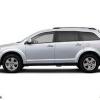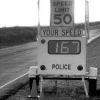
jeffhoward001
-
Posts
35 -
Joined
-
Last visited
-
Days Won
1
Reputation Activity
-
 jeffhoward001 got a reaction from 2late4u in Highest Mileage Journey... Who's in it for the long haul?
jeffhoward001 got a reaction from 2late4u in Highest Mileage Journey... Who's in it for the long haul?
Winner winner, chicken dinner! 😃 313K is the highest I've seen on here yet!
-
 jeffhoward001 got a reaction from Locosiete in Highest Mileage Journey... Who's in it for the long haul?
jeffhoward001 got a reaction from Locosiete in Highest Mileage Journey... Who's in it for the long haul?
Winner winner, chicken dinner! 😃 313K is the highest I've seen on here yet!
-
 jeffhoward001 got a reaction from jkeaton in Highest Mileage Journey... Who's in it for the long haul?
jeffhoward001 got a reaction from jkeaton in Highest Mileage Journey... Who's in it for the long haul?
Curious who has the highest mileage Journey on here, and what (if any) were the major repairs as you edge towards 200K (miles, not km
We're at 145K, and only major repairs were an alternator, motor mount (skeptical whether this was necessary), and the left-bank valve-seat replacement that Dodge covers at no-charge for '11 & '12 owners.
Minor repairs were the bluetooth module, and the stupid blender doors for the zonal climate control.
Over all, nothing too exciting or shocking. It's been a good car. I suspect some CV boot or axle replacements are coming sometime before 200K. Trans still feels solid, we get the fluid & filter changed every 50K.
Anyone over 200K?
-
 jeffhoward001 reacted to Armando G in The Big 8 - 0
jeffhoward001 reacted to Armando G in The Big 8 - 0
Today I hit another milestone. My girl and I hit the 80,000 mark while towing my new toy. I still love my choice with going with my DJ and she hasn't let me down yet. She's my daily driver, my family road trip car, and my utility vehicle when needed. I did have a P0128 code last week, but then it went away. Apparently that's a thermostat code that is sometimes tripped by cold weather(?). Either way, it's clear for a week now and running great. I hate to hear of all of the issues some people have with theirs, but I thank the moto Gods for getting one of the good ones. I fully maintain her meticulously and will probably do the 100k service a little sooner than recommended.
If I ever do decide to take on another car payment, I will have a hard time letting my DJ go.
-
 jeffhoward001 got a reaction from jkeaton in First time tow'er. Can I tow a boat ?
jeffhoward001 got a reaction from jkeaton in First time tow'er. Can I tow a boat ?
Something else to think about is how far your towing the boat. If most of your towing is to the local boat ramp, and you live in a relatively flat part of the country, I think you have more flexibility. Long hilly trips that exceed the rating will eventually cause issues
-
 jeffhoward001 got a reaction from dhh3 in Some data on transmission performance
jeffhoward001 got a reaction from dhh3 in Some data on transmission performance
I would agree 100% with both of you... I suspect this has something to do with fuel efficiency. Which in all honesty, I wouldn't mind that shifting behavior if I had a choice. For example, on my Audi it had a "sport mode" which was nothing more than a single sent to the TCU (position on the shifter) that made the transmission hold the gears a little longer and downshift a little earlier.
It's genius because in "regular" mode it up-shifts super early and uses "throttle adaptation" which actually makes the throttle "softer" so to speak, which in turn makes for less downshifts when the driver adds only slightly more throttle pressure. So instead of me just complaining more, onto solutions
I'm going to give Dodge a call about the TCU update (if any exist for my 2012). I think that's a good start.
I'd also like to look into after-market TCU flashes for Dodge TCUs. I know some exist for the higher-end SRT's and such, but haven't looked into anything for the Journey. A switchable "sport" and "economy" mode would be amazing, but who knows if that exists.
If I find anything, I'll be sure to report back to the forum.
-
 jeffhoward001 got a reaction from dhh3 in Towing Feedback
jeffhoward001 got a reaction from dhh3 in Towing Feedback
That's great feedback and makes sense. We're looking at one of the lighter Forest River R-Pods. They get good reviews, and are targeted at the CUV market with low tow/tongue weight, and low air-resistance. I find that towing with non-truck vehicles tends to be a very polarizing issue - one side being the "I should be able to tow the Class III limit if a Class III hitch fits!" Then the other side being the towing purists who balk at towing with anything less than a real "truck" or diesel.
As with any argument, most real use-cases tend to fall towards the middle. For example, does towing a heavier trailer put more wear and tear on the car? Probably, but there are so many variables. How often do you plan to tow? How far is your average trip? Are there a ton of hills, or is it relatively flat? Will you be against a 40 mph head-wind for half your trip? Will you pay attention to your trans temp gauges?
Anyway, we definitely fall in the less-frequent crowd. We make probably 4-5 trips per year and stay within a 100 miles of home. There are definitely some hills, but I'm fine taking them slow and using my gears. We already have a brake controller and I wouldn't tow without one. There's a local rental shop that has some R-Pods for rental, so we'll probably do that next spring before making any real purchasing decisions.
Thanks again for all the feedback so far, I'd love to hear more examples if people have them.
-
 jeffhoward001 got a reaction from dhh3 in Towing Feedback
jeffhoward001 got a reaction from dhh3 in Towing Feedback
Thanks guys, I appreciate the insight. I was also hoping for some feedback from people who have done some towing with their Journey.
-
 jeffhoward001 got a reaction from dhh3 in Towing Feedback
jeffhoward001 got a reaction from dhh3 in Towing Feedback
Hello All -
We're thinking about buying a 15-17 ft travel trailer to tow behind our 2012 V6 journey, and I was surprised to see so many negative posts. Given the high output V6 and thr six-speed gearbox, this seems like as good as it gets for normally aspirated V6 towing.
The trailers we're looking at are 2500-3000 dry weight, so should be less than 4k loaded up. Questions to the forum are:
1) Why is the journey towing cap 1K less than the caravan. That makes no sense
2) If my expectation is to cruise at 55mph on the flats and I'm Ok with gearing down to 35-40 mph on the hills, will this be a decent towing experience?
Ten years ago we were towing campers with engineswith 25% less horsepower and only 4 speeds. Not sure why the Journey has such a bad rep for towing. Maybe the high-powered diesels have raised the bar way higher?
- Jeff
-
 jeffhoward001 got a reaction from Potlicquor in 283hp versus 305hp?
jeffhoward001 got a reaction from Potlicquor in 283hp versus 305hp?
Hello All -
Looking at the Wiki for the Pentastar:
http://en.wikipedia.org/wiki/Chrysler_Pentastar_engine#US_market_versions
the 3.6L in the journey is rated @ 283hp (which is respectable) but the exact same engine in the Challenger is rated at 305hp. That's a fairly large difference that I have to assume only comes from a different fuel and/or VVT mapping in the ECU. A few questions on this:
1) I'm assuming it's possible to use the same sport tunes on the Journey ECU as the Challenger ECU, correct? I can't imagine Dodge using a different ECU for the same engine (however I CAN see them using different ECU programming to increase "driveablility")
2) The Pentastar has variable valve timing (VVT). If this works similar to german cars, this is HUGE in doing custom tunes for E85 flex-fuel. You can get 10-20% more horsepower in E85 if you have the ability to change the valve and ignition timing to take advantage of the higher compression ratios available on E85. While that may not sound like much, if you were able to tune the Challenger ECU program for E85, the potential exists to push 350hp by simply changing your ECU program and filling up on a tank of E85. That's a pretty attractive offer to get V8 performance out of commodity 3.6L engine.
I'm sure you guys will redirect me to the Challenger forums (that was my next stop) But just curious if anyone in the Journey camp had attempted custom tunes. I have years of experience with custom tunes on high horsepower V6's, so no need to turn this into "...it's going to destroy your car!!..." thread I'm well aware of the risks of custom tuning, and the fact that there are a few simple things you can do to mitigate the majority of those risks.
Thanks All,
-
 jeffhoward001 got a reaction from Potlicquor in 283hp versus 305hp?
jeffhoward001 got a reaction from Potlicquor in 283hp versus 305hp?
All fair answers I've always been a tuner, so it's something I really enjoy talking about, testing, tweaking, etc. So one thing to consider (especially with variable valve-timing engines) is that while the top-end power may not change much with a tune, you can move the torque curve around. I don't know much (yet) about the Mopar 3.6L VVT, but if it's similar to german cars, a big change in a "performance" mode is moving the torque curve back a bit (lower in the RPM range).
We bought a 2012 AWD Journey Crew trim last Friday, and so far we're really happy with it (with no tuning!). I think this is going to be a great family car for us. Tough to let go of my Audi, it pushes 320hp and 300 lb/ft of torque, but it's time to move on... We have too many kids and too many grandparents to shuttle around!
-
 jeffhoward001 got a reaction from Potlicquor in 283hp versus 305hp?
jeffhoward001 got a reaction from Potlicquor in 283hp versus 305hp?
+1 on the transmission shifting... We took our new Journey to the coast last weekend, and while it drives really smooth, I would best describe the shifting as "sloppy". It doesn't give me the feeling like anything is wrong or going to break, but just not nearly as "crisp" as I expected. It's strange because the transmission on my '77 Dodge D200 actually feels best to me out of all the vehicles I've owned in the past 20 years. It's shift quickly and crisp. My 2002 Audi had a five-speed auto tiptronic transmission that was know for slow shifts, but not as sloppy as the Journey,
What's your take on Mopar's positioning with this transmission? They use it in a ton of rigs now, so they're clearly invested in the platform. If they could clean up the shifting with a TCU update, I'm assuming they would. Just seems strange to me given how long this transmissions been out. You'd think all the kinks would be worked out.
-
 jeffhoward001 got a reaction from Journey_SeXT in Some data on transmission performance
jeffhoward001 got a reaction from Journey_SeXT in Some data on transmission performance
We originally started talk about transmissions on my "285 vs 305hp" thread. Thought I'd share this new data on a new thread that's specifically focused on the transmission.
1) Can't remember who, but someone mentioned that "adaptation" in the TCU may make the transmission "feel" a little better after it adapts to my driving style. I'm happy to report, "Yes and Yes" After about a month of drive, shifts seem to be a little more crisp and it seems to down-shift a little sooner (which fits my driving style).
2) So the biggest annoyance now is the dreaded 35mph "death zone". I'll explain - Both me (the "car guy") and my wife (knows nothing about cars) both had the same fundamental complain - right around 35mph, (which happens to be the speed limit on all the streets with hills around our house) the DJ kind of "poops out". After some playing around with it, I realized that it's the shift from 3rd gear to 4th gear.
...It shifts into 4th gear, loses considerable power
...which forces you to press harder on the accelerator forcing a down-shift
...which in-turn surges the car forward
...which in-turn encourages you to let off the accelerator
...which in-turn causes an up-shift to 4th
...which in-turn... you get the idea.
It's most annoying on hills where the drop in power really matters. So I pulled some data on the HP/TQ curve of the Journey's 3.6L as well as some logged shift points at different speeds, and suddenly it all makes sense. The largest ratio-difference is between 3-4.
Referencing the data below, you can see there's a huge drop (36%) in the ratio difference between 3rd and 4th. While that in itself isn't a huge deal, it becomes a huge deal when you see how that effects the power output of the engine. The range from 2000-3000rpm is what I would consider the "bread-n-butter" RPM range for this engine during regular driving.
1st gear is really low, and the TCU knows it. So (this is my assumption) they programmed the TCU to hold 1st gear a little longer when you have anything more than moderate throttle pressure. This makes for slightly higher revs coming out of 1st, however it's a great shifting experience. It revs out to a little over 3K, which drops you nicely into 2200 rpm range in 2nd. PLUS, the power will always feel more responsive with higher ratios because the engine has more "cranking force" against the drivetrain.
They did a great job with the 2-3 ratios by dropped the ratio between 2nd and 3rd to just 19%. Again, this provides a great shifting experience because the drop in percentage difference means a 3K rev in 2nd will drop you into a nice spot on the TQ-curve in 3rd @ around 2500 rpm.
So here's the rub... They screw it all up with 3rd to 4th. Like I was saying before, the higher the ratio, the more "pull" the engine has against the drivetrain. So they really shoot themselves in the foot on 3rd to 4th. They not only exceed the transmission average of around 30% per-shift, but do so (unfortunately) at a VERY critical time in the driving experience (~35-45 mph). Looking at the data, you experience (roughly) a 55hp drop in power when the engine shifts from 3rd to 4th @ 3K revs.
Rarely does data so perfectly match real-world situations, but that is exactly what it feels like. 1st, 2nd, and 3rd feel like a nice well-tuned V6, then when it hits 4th, it feels like you took the engine out of my wife's Civic and dropped it into the Journey. Which, given the HP numbers at the 1800rpm, that would be a pretty accurate comparison!!
So what's the fix? I think two things: 1) They need to have the transmission hold 3rd longer, especially when there's additional throttle pressure. The easiest way to "detect" a hill is simply by measuring throttle pressure against speed. On a 6% grade, you will likely need to press the throttle 25-30% more to achieve the same acceleration as you would flat ground.
2) I don't know if this is getting too complicated for TCU programming, but when it detects a down-shift from 4th to 3rd, I think it would make sense for it to continue holding 3rd even if the driver lets off the throttle a little. This would prevent the vicious down-shift/surge/decelerate/up-shift situation I described above.
Longer-term fix would be to actually use the funky "fourth-prime" gear as a regular gear, and spread the ratios out a little more over seven gears (yes, there's a hidden seventh gear inside all of your Journey's )
-
 jeffhoward001 got a reaction from jkeaton in Some data on transmission performance
jeffhoward001 got a reaction from jkeaton in Some data on transmission performance
I would agree 100% with both of you... I suspect this has something to do with fuel efficiency. Which in all honesty, I wouldn't mind that shifting behavior if I had a choice. For example, on my Audi it had a "sport mode" which was nothing more than a single sent to the TCU (position on the shifter) that made the transmission hold the gears a little longer and downshift a little earlier.
It's genius because in "regular" mode it up-shifts super early and uses "throttle adaptation" which actually makes the throttle "softer" so to speak, which in turn makes for less downshifts when the driver adds only slightly more throttle pressure. So instead of me just complaining more, onto solutions
I'm going to give Dodge a call about the TCU update (if any exist for my 2012). I think that's a good start.
I'd also like to look into after-market TCU flashes for Dodge TCUs. I know some exist for the higher-end SRT's and such, but haven't looked into anything for the Journey. A switchable "sport" and "economy" mode would be amazing, but who knows if that exists.
If I find anything, I'll be sure to report back to the forum.
-
 jeffhoward001 got a reaction from Journeyman425 in Some data on transmission performance
jeffhoward001 got a reaction from Journeyman425 in Some data on transmission performance
We originally started talk about transmissions on my "285 vs 305hp" thread. Thought I'd share this new data on a new thread that's specifically focused on the transmission.
1) Can't remember who, but someone mentioned that "adaptation" in the TCU may make the transmission "feel" a little better after it adapts to my driving style. I'm happy to report, "Yes and Yes" After about a month of drive, shifts seem to be a little more crisp and it seems to down-shift a little sooner (which fits my driving style).
2) So the biggest annoyance now is the dreaded 35mph "death zone". I'll explain - Both me (the "car guy") and my wife (knows nothing about cars) both had the same fundamental complain - right around 35mph, (which happens to be the speed limit on all the streets with hills around our house) the DJ kind of "poops out". After some playing around with it, I realized that it's the shift from 3rd gear to 4th gear.
...It shifts into 4th gear, loses considerable power
...which forces you to press harder on the accelerator forcing a down-shift
...which in-turn surges the car forward
...which in-turn encourages you to let off the accelerator
...which in-turn causes an up-shift to 4th
...which in-turn... you get the idea.
It's most annoying on hills where the drop in power really matters. So I pulled some data on the HP/TQ curve of the Journey's 3.6L as well as some logged shift points at different speeds, and suddenly it all makes sense. The largest ratio-difference is between 3-4.
Referencing the data below, you can see there's a huge drop (36%) in the ratio difference between 3rd and 4th. While that in itself isn't a huge deal, it becomes a huge deal when you see how that effects the power output of the engine. The range from 2000-3000rpm is what I would consider the "bread-n-butter" RPM range for this engine during regular driving.
1st gear is really low, and the TCU knows it. So (this is my assumption) they programmed the TCU to hold 1st gear a little longer when you have anything more than moderate throttle pressure. This makes for slightly higher revs coming out of 1st, however it's a great shifting experience. It revs out to a little over 3K, which drops you nicely into 2200 rpm range in 2nd. PLUS, the power will always feel more responsive with higher ratios because the engine has more "cranking force" against the drivetrain.
They did a great job with the 2-3 ratios by dropped the ratio between 2nd and 3rd to just 19%. Again, this provides a great shifting experience because the drop in percentage difference means a 3K rev in 2nd will drop you into a nice spot on the TQ-curve in 3rd @ around 2500 rpm.
So here's the rub... They screw it all up with 3rd to 4th. Like I was saying before, the higher the ratio, the more "pull" the engine has against the drivetrain. So they really shoot themselves in the foot on 3rd to 4th. They not only exceed the transmission average of around 30% per-shift, but do so (unfortunately) at a VERY critical time in the driving experience (~35-45 mph). Looking at the data, you experience (roughly) a 55hp drop in power when the engine shifts from 3rd to 4th @ 3K revs.
Rarely does data so perfectly match real-world situations, but that is exactly what it feels like. 1st, 2nd, and 3rd feel like a nice well-tuned V6, then when it hits 4th, it feels like you took the engine out of my wife's Civic and dropped it into the Journey. Which, given the HP numbers at the 1800rpm, that would be a pretty accurate comparison!!
So what's the fix? I think two things: 1) They need to have the transmission hold 3rd longer, especially when there's additional throttle pressure. The easiest way to "detect" a hill is simply by measuring throttle pressure against speed. On a 6% grade, you will likely need to press the throttle 25-30% more to achieve the same acceleration as you would flat ground.
2) I don't know if this is getting too complicated for TCU programming, but when it detects a down-shift from 4th to 3rd, I think it would make sense for it to continue holding 3rd even if the driver lets off the throttle a little. This would prevent the vicious down-shift/surge/decelerate/up-shift situation I described above.
Longer-term fix would be to actually use the funky "fourth-prime" gear as a regular gear, and spread the ratios out a little more over seven gears (yes, there's a hidden seventh gear inside all of your Journey's )
-
 jeffhoward001 got a reaction from rolly in Some data on transmission performance
jeffhoward001 got a reaction from rolly in Some data on transmission performance
We originally started talk about transmissions on my "285 vs 305hp" thread. Thought I'd share this new data on a new thread that's specifically focused on the transmission.
1) Can't remember who, but someone mentioned that "adaptation" in the TCU may make the transmission "feel" a little better after it adapts to my driving style. I'm happy to report, "Yes and Yes" After about a month of drive, shifts seem to be a little more crisp and it seems to down-shift a little sooner (which fits my driving style).
2) So the biggest annoyance now is the dreaded 35mph "death zone". I'll explain - Both me (the "car guy") and my wife (knows nothing about cars) both had the same fundamental complain - right around 35mph, (which happens to be the speed limit on all the streets with hills around our house) the DJ kind of "poops out". After some playing around with it, I realized that it's the shift from 3rd gear to 4th gear.
...It shifts into 4th gear, loses considerable power
...which forces you to press harder on the accelerator forcing a down-shift
...which in-turn surges the car forward
...which in-turn encourages you to let off the accelerator
...which in-turn causes an up-shift to 4th
...which in-turn... you get the idea.
It's most annoying on hills where the drop in power really matters. So I pulled some data on the HP/TQ curve of the Journey's 3.6L as well as some logged shift points at different speeds, and suddenly it all makes sense. The largest ratio-difference is between 3-4.
Referencing the data below, you can see there's a huge drop (36%) in the ratio difference between 3rd and 4th. While that in itself isn't a huge deal, it becomes a huge deal when you see how that effects the power output of the engine. The range from 2000-3000rpm is what I would consider the "bread-n-butter" RPM range for this engine during regular driving.
1st gear is really low, and the TCU knows it. So (this is my assumption) they programmed the TCU to hold 1st gear a little longer when you have anything more than moderate throttle pressure. This makes for slightly higher revs coming out of 1st, however it's a great shifting experience. It revs out to a little over 3K, which drops you nicely into 2200 rpm range in 2nd. PLUS, the power will always feel more responsive with higher ratios because the engine has more "cranking force" against the drivetrain.
They did a great job with the 2-3 ratios by dropped the ratio between 2nd and 3rd to just 19%. Again, this provides a great shifting experience because the drop in percentage difference means a 3K rev in 2nd will drop you into a nice spot on the TQ-curve in 3rd @ around 2500 rpm.
So here's the rub... They screw it all up with 3rd to 4th. Like I was saying before, the higher the ratio, the more "pull" the engine has against the drivetrain. So they really shoot themselves in the foot on 3rd to 4th. They not only exceed the transmission average of around 30% per-shift, but do so (unfortunately) at a VERY critical time in the driving experience (~35-45 mph). Looking at the data, you experience (roughly) a 55hp drop in power when the engine shifts from 3rd to 4th @ 3K revs.
Rarely does data so perfectly match real-world situations, but that is exactly what it feels like. 1st, 2nd, and 3rd feel like a nice well-tuned V6, then when it hits 4th, it feels like you took the engine out of my wife's Civic and dropped it into the Journey. Which, given the HP numbers at the 1800rpm, that would be a pretty accurate comparison!!
So what's the fix? I think two things: 1) They need to have the transmission hold 3rd longer, especially when there's additional throttle pressure. The easiest way to "detect" a hill is simply by measuring throttle pressure against speed. On a 6% grade, you will likely need to press the throttle 25-30% more to achieve the same acceleration as you would flat ground.
2) I don't know if this is getting too complicated for TCU programming, but when it detects a down-shift from 4th to 3rd, I think it would make sense for it to continue holding 3rd even if the driver lets off the throttle a little. This would prevent the vicious down-shift/surge/decelerate/up-shift situation I described above.
Longer-term fix would be to actually use the funky "fourth-prime" gear as a regular gear, and spread the ratios out a little more over seven gears (yes, there's a hidden seventh gear inside all of your Journey's )
-
 jeffhoward001 got a reaction from jkeaton in Seat Position and Mirror Memory
jeffhoward001 got a reaction from jkeaton in Seat Position and Mirror Memory
This is true... Once you have it though, it's tough to go back to not!
-
 jeffhoward001 got a reaction from Journeyman425 in 283hp versus 305hp?
jeffhoward001 got a reaction from Journeyman425 in 283hp versus 305hp?
All fair answers I've always been a tuner, so it's something I really enjoy talking about, testing, tweaking, etc. So one thing to consider (especially with variable valve-timing engines) is that while the top-end power may not change much with a tune, you can move the torque curve around. I don't know much (yet) about the Mopar 3.6L VVT, but if it's similar to german cars, a big change in a "performance" mode is moving the torque curve back a bit (lower in the RPM range).
We bought a 2012 AWD Journey Crew trim last Friday, and so far we're really happy with it (with no tuning!). I think this is going to be a great family car for us. Tough to let go of my Audi, it pushes 320hp and 300 lb/ft of torque, but it's time to move on... We have too many kids and too many grandparents to shuttle around!





